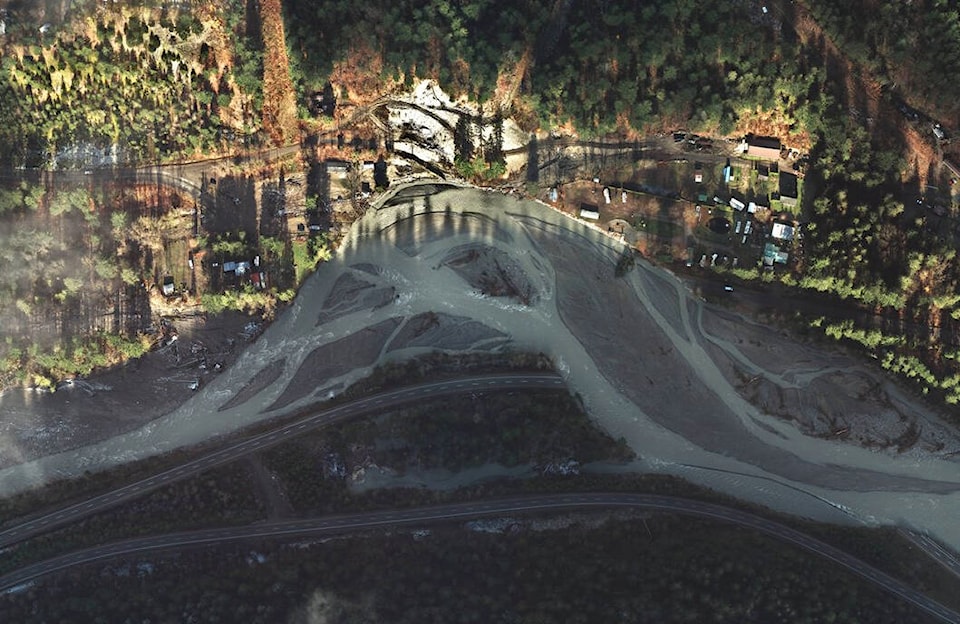Water from the tail end of the third of three atmospheric rivers striking B.C. is still falling from the sky as I write these words.
As that flows, it may seem too soon to point fingers about flood preparation and response.
But it’s happening.
Public Safety Minister Mike Farnworth, is getting a failing grade from a number of parties regarding action and inaction as the water inundated farms, washed away roads, destroyed bridges, shattered lives and changed our communities, in some ways, forever.
In a back-and-forth exchange with the media this week worthy of an Abbott and Costello routine, Chilliwack city councillor and Fraser Valley Regional District (FVRD) board chair Jason Lum lashed out at the province.
Lum issued an urgent plea Tuesday as roads, diking infrastructure, sewer systems and bridges “continue to wash away or suffer catastrophic damage” due to the ongoing flooding.
He said requests went unanswered for days, such as an urgent funding request for $1.5 million to shore up Othello Road near Hope. An application for $30,000 to support standby efforts of FVRD volunteer fire departments was outright denied.
READ MORE: Fraser Valley Regional District says applications for B.C.’s help on floods ‘unanswered for days’
Lum called that denial “an insult” to the volunteers out risking lives for neighbours.
But during a press conference earlier Tuesday, Farnworth was asked why there have been delays in the FVRD’s requests to do urgent work to prepare for and prevent flooding.
Who’s on first?
Farnworth flat-out denied any requests had been made.
“There is no request for permission for urgent repairs to prevent flooding.”
Lum then told Progress reporter Jennifer Feinberg how he was perplexed by that response wondering why FVRD funding requests had not made it to Farnworth’s desk.
Lum said it was “concerning” since there were more than 50 emergency requests from FVRD pending approval from EMBC.
What’s on second?
It’s almost as if Farnworth and the provincial government are in defensive mode before they’ve even been criticized.
Or, maybe they knew it was coming?
I don’t know. (He’s on third.)
Ben Parfitt with the Canadian Centre for Policy Alternatives wrote a report issued Dec. 1 highly critical of the provincial government’s response. His main source was Allan Chapman the now retired, one-time head of B.C.’s River Forecast Centre (RFC).
Parfitt pointed to a review of the RFC in 2010 by consultant Jim Mattison that called for increased staffing levels that was never acted on. Then there was the lacklustre and late warnings by officials to the public about rising water levels in early November. Parfitt says Emergency Management B.C., the RFC and the province totally dropped the water balloon on this one.
“There was ample rain forecast information available by Thursday (Nov. 11) that should have triggered the first flood warning that day for the south coast and for the Coldwater, Tulameen and Similkameen rivers.”
That quote is from former RFC head Chapman in Parfitt’s report.
“The late issuance of warnings by the RFC in the days and hours leading up to the horrendous flooding that has devastated Abbotsford, Merritt, Princeton and First Nations communities in recent weeks is coming under increasing scrutiny,” that from the CCPA press release issued Thursday.
Parfitt says there are 24 employees working at the Edmonton-based river forecast centre in Alberta, a province 300,000 square kilometres smaller than B.C. In the U.S. Pacific Northwest centre, an area that is 200,000 square kilometres smaller than B.C., based in Portland they have 16 employees.
In B.C.? There are 5.5 full-time employees, he says, only two tasked with the critical work of forecasting what could happen to our rivers in response to an emergency.
Parfitt said the RFC and EMBC declined to answer his questions about what they knew early on about why the U.S. was able to issue alerts much sooner than B.C.
All of us need to know who’s really on first, second and third.
As Parfitt put it: “In the face of silence, the flood of questions is certain to grow.”
Do you have something to add to this story, or something else we should report on? Email:
editor@theprogress.com
Like us on Facebook and follow us on Twitter.
